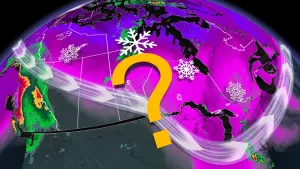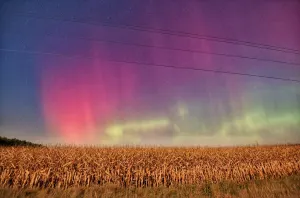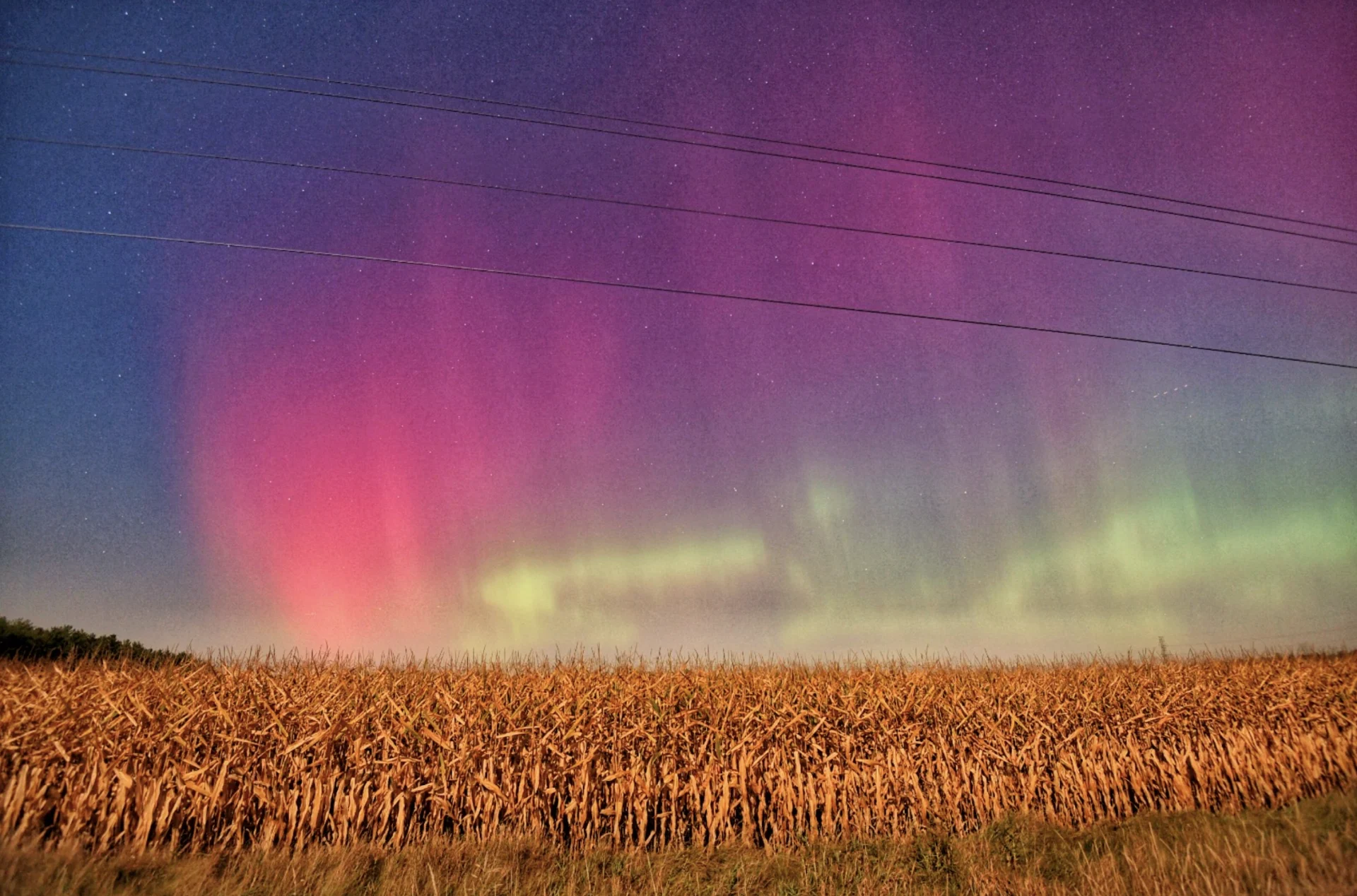
Look up! Auroras may spark across Canada Thursday and Friday nights
After a major x-class solar flare caused an eruption from the Sun late on Tuesday, we may be in for another spectacular display of the Northern Lights in the nights ahead.
Eyes to the sky later this week! Bright displays of the Aurora Borealis may be visible across Canada in the aftermath of a powerful solar flare.
Late in the afternoon on Tuesday, October 1, one of the strongest solar flares of the current cycle blasted out from the Sun. This flare, ranked as X7.1-class, originated from a fast-growing sunspot named AR3842.
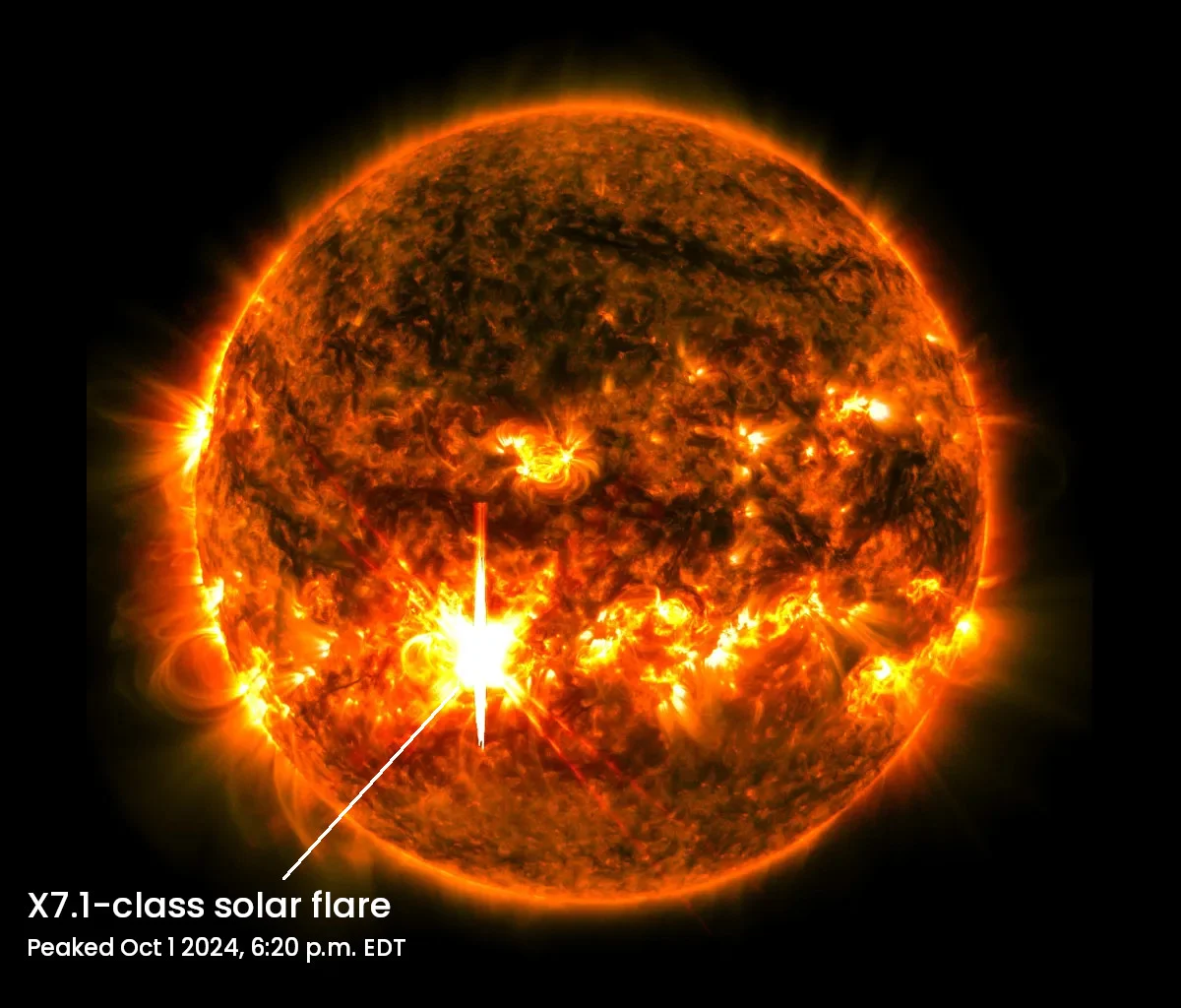
The X7.1-class solar flare from October 1, 2024, captured by NASA's Solar Dynamics Observatory (SDO). This flare is now the second most powerful of Solar Cycle 25, second only to the May 14 X8.7 flare. (NASA)
Following this powerful explosion, an instrument on the NASA/ESA Solar and Heliospheric Observatory (SOHO) spotted a coronal mass ejection, or CME, expanding away from the Sun. 'Solar storms' such as these are basically immense clouds of ionized plasma from the Sun, containing billions of tons of charged particles.
As they travel through space, CMEs expand out into a wide arch, stretching across the inner solar system and sweeping up the solar wind in their path.

Two frames of NOAA's solar wind model are combined here to show the movement of the October 1-2 CME between the Sun and Earth. At the top of each frame is a plot of the density of particles, with the widening arc between the Sun and Earth representing the expanding CME. At the bottom of each frame is a plot of the speed of the particles. The 'pinwheel' pattern around the Sun is the flow of the solar wind, and the dark region just behind the CME is the solar wind being swept up by the cloud. (NOAA/Scott Sutherland)
Should one of these solar storms pass by Earth, it can spark a 'geomagnetic storm' and produce bright displays of the Northern and Southern Lights in our skies.
As shown below, this CME only shows up faintly in imagery from SOHO. Even so, with it following such a powerful solar flare, the particles in the cloud may have absorbed a significant amount of energy.
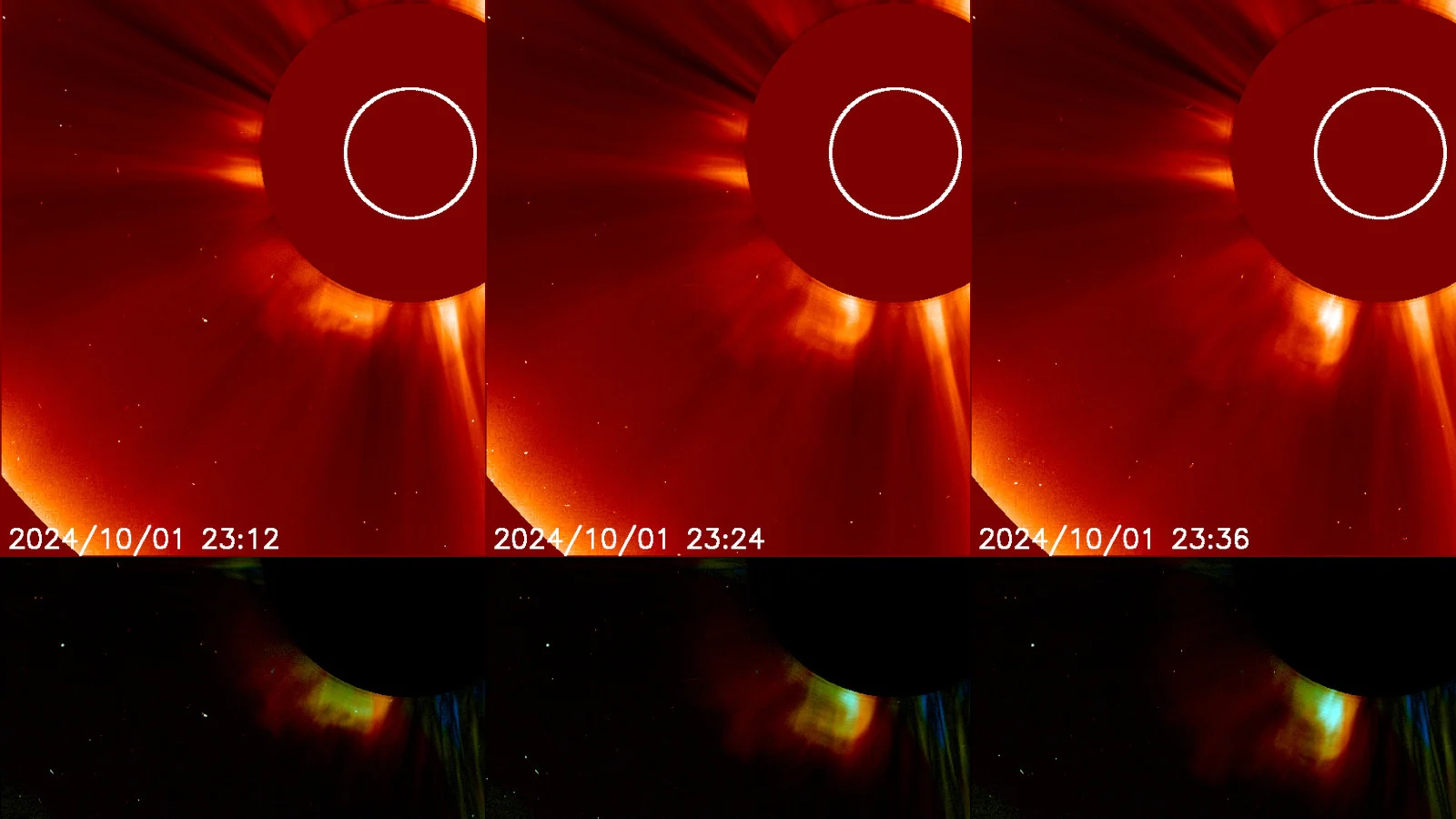
The Oct 1 CME is shown here in coronagraph images captured by the Solar and Heliospheric Observatory. The Sun is located inside the white circle, but is blocked by the coronagraph shield (the blank area around the white circle). The bright region to the lower left of the coronagraph shield is the expanding CME. Along the bottom of the image, the 'normal' solar activity from just before the eruption has been subtracted away to highlight only the expanding CME. (NASA/ESA SOHO/Scott Sutherland)
Based on the current forecast, the CME should arrive here around sometime on Friday, with some uncertainty as to whether it could get here a bit sooner (late on Thursday) or a bit later (early on Saturday). When it does arrive, it is expected to score a glancing blow on Earth's magnetic field, sparking a geomagnetic storm.
Given the density and speed of the solar storm when it arrives, and the energy the particles it the cloud may be carrying with them at that time, forecasters with NOAA's Space Weather Prediction Center have issued a Geomagnetic Storm Watch.
Geomagnetic storm levels could rise as high as G3 (strong) in the wake of this CME's arrival.

Aurora visibility over North America is plotted here for the nights of Wednesday, October 2 and Thursday, October 3. Auroras will likely remain to the far north Wednesday night, but may expand far south Thursday night. The colour of the aurora arc indicates the likelihood of auroras being visible in the sky. The red line to the south of the arc designates the farthest southerly extent, where auroras may be seen at the northern horizon. (NOAA)
According to NOAA SWPC, we may see G1 (minor) geomagnetic storm conditions starting early Thursday evening (EDT), rising to G2 (moderate) and G3 (strong) levels overnight (EDT). With the strongest aurora displays tending to show up around midnight, local time, this timing will favour western Canada for aurora viewing Thursday night into Friday morning.
The forecast is predicting a resurgence of aurora activity on Friday, with levels rising again to G2-G3 starting in the evening (EDT) and continuing at G2 levels overnight into Saturday. This timing would favour eastern Canada, and auroras could reach all the way down into the northeastern United States and even over southwestern Ontario after dark. With G2 levels forecast to persist, western Canada could be in for two great displays in a row!
Stay tuned for more updates as the solar storm draws closer to Earth!







